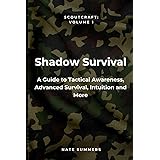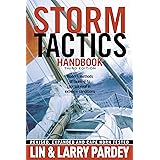Embracing the Wild: Navigating Solo Adventures in the Canadian Wilderness on Vancouver Island
Ever wondered what it is truly like to be dropped off by helicopter, completely alone, in the vast Canadian wilderness? As seen in the accompanying video, the experience of a solo camping trip on Vancouver Island can be both exhilarating and challenging. This journey demands careful preparation, respect for nature, and a robust understanding of backcountry safety.
A profound sense of freedom is often expressed by those who undertake such an adventure. However, this freedom comes with significant responsibilities, particularly when facing the untouched beauty and inherent risks of British Columbia’s remote landscapes. Understanding the essential steps for survival and enjoyment is paramount for anyone considering a similar undertaking.
Essential Preparations for Wilderness Survival
Embarking on a solo expedition in a place like the Vancouver Island wilderness requires meticulous planning. Every item packed must serve a purpose, as was demonstrated by the traveler with her rucksack and food bag. Key areas of focus for preparation typically include navigation, shelter, hydration, sustenance, and emergency communication.
When venturing into bear and cougar country, protective measures are considered vital. Bear spray is often carried, and a sturdy knife is usually kept readily accessible for defense or utility tasks. These tools are seen not just as offensive weapons but as crucial components of a comprehensive safety strategy against potential wildlife encounters.
Water Sourcing and Purification in Remote Settings
One of the immediate priorities upon arrival in any remote area is securing a safe water source. The rivers and streams of the Canadian wilderness may appear pristine, but purification is always recommended. Contaminated water can lead to serious health issues, such as diarrhea, which can quickly debilitate an individual in the backcountry.
Portable water filters are commonly utilized for this purpose, effectively removing bacteria and protozoa. Other methods, such as boiling or chemical tablets, are also viable alternatives, though a filter often offers the quickest and most convenient solution for immediate hydration needs. Sufficient water intake is critical, especially when enduring hot weather conditions on Vancouver Island.
Strategic Camp Selection and Setup
The choice of a campsite plays a crucial role in both safety and comfort. Upon being dropped off, an initial scout of the surrounding area is often undertaken to identify the most suitable spot. Factors considered typically include protection from the elements, proximity to a water source, and avoidance of wildlife trails or dense vegetation where animals might reside.
Setting up camp in an area that allows for visibility and strategic escape routes is generally advised. Elevated ground can protect against flash floods, while natural windbreaks can offer shelter. The layout of a camp, including the placement of sleeping areas, cooking zones, and food storage, is carefully thought out, particularly in regions known for large predators.
Food Management in Bear Country
Living in the Canadian wilderness, especially where bears are prevalent, necessitates strict food management protocols. It is universally recommended that cooking and eating areas be located a significant distance from sleeping quarters. This practice helps to prevent attracting bears to where one sleeps, minimizing the risk of a nocturnal encounter.
All food, scented items, and even cooking utensils must be stored securely. The “bear bag” method, where food is suspended from a tree limb at least 10-12 feet off the ground and several feet from the trunk, is a common technique. Alternatively, bear-resistant canisters are increasingly used for their reliability and ease of use in areas where suitable trees for hanging are scarce.
Maintaining Hygiene and Well-being in the Wild
Even when deep in the wilderness, personal hygiene remains important for comfort and health. For those seeking sustainable options, natural alternatives are often sought out. The use of yucca root as a biodegradable soap, rich in saponins, exemplifies an environmentally conscious approach to staying clean in the backcountry.
Taking a refreshing dip in a clear river can also contribute significantly to one’s well-being, as was experienced in the video. The mental and physical refreshment gained from such simple acts is invaluable when facing the demands of solo camping. Embracing these small moments of joy helps sustain morale throughout the journey.
Wildlife Encounters and Environmental Observation
A solo trip into the Canadian wilderness offers unparalleled opportunities for wildlife observation. Evidence of beavers, such as chewed wood, can often be discovered near waterways, showcasing their industrious nature. The presence of predator birds circling overhead is also a common sight, indicating a healthy ecosystem.
While encounters with bears and cougars are a primary safety concern, responsible wilderness travel also means appreciating the broader ecological context. Understanding animal behavior, observing tracks, and recognizing the signs of an active wildlife area contribute to a safer and more enriching experience. Respect for all inhabitants of the wild is a cornerstone of responsible outdoor adventure.
Emergency Preparedness and Communication
Despite careful planning, emergencies can arise. Carrying a satellite telephone or other emergency communication device is often considered non-negotiable for solo excursions into remote areas. These devices allow for contact with the outside world, enabling a rescue if a serious injury or unforeseen circumstance occurs.
Knowledge of basic first aid and self-reliance skills are also paramount. The ability to assess a situation calmly and implement appropriate measures can make a significant difference in a survival scenario. Planning for potential delays, like jet lag impacting energy levels, is also an important aspect of comprehensive preparedness for a solo camping adventure in the Canadian wilderness.











